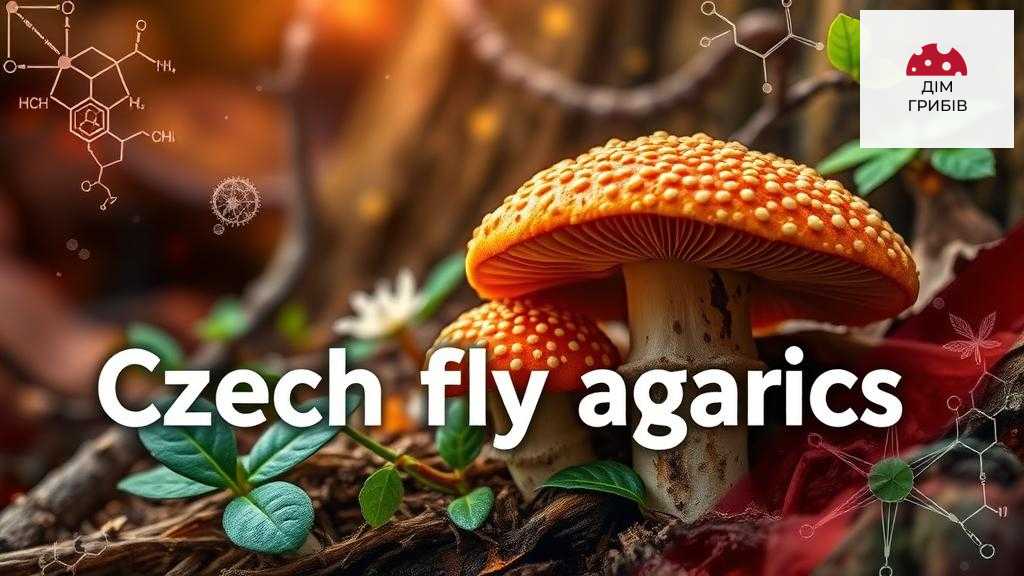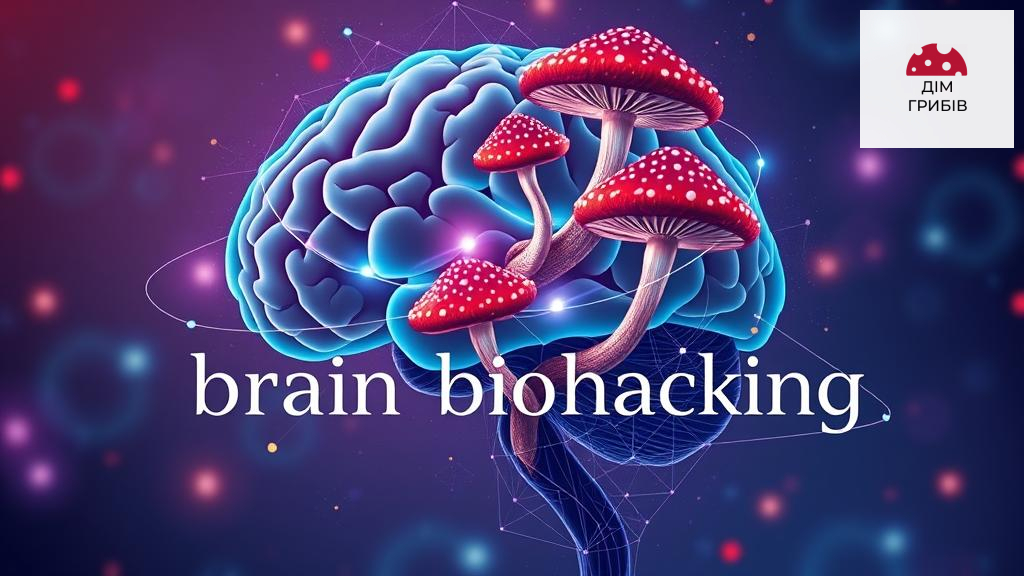Amanita muscaria medicine today: discovering a new dimension in ointments, tinctures, extracts and microdosing of amanita muscaria

Fly agaric medicine introduction
Amanita muscaria medicine is a promising field of modern research, which involves the use of natural components of amanita muscaria for the development of innovative pharmaceuticals. In the modern world, where traditional methods of treatment are gradually supplemented by natural therapies, amanita muscaria medicine is gaining increasing popularity among scientists and clinicians. Research in this area is based not only on the many years of historical experience of using amanita muscaria, but also on the latest methods of analysis and modeling of its biochemical activity. This allows you to create drugs that combine traditional wisdom with modern pharmacological achievements.
Amanita muscaria medicine in human treatment is gaining additional importance due to the growing resistance to synthetic drugs, which contributes to the integration of natural methods into complex therapy. Innovations in amanita muscaria medicine allow you to expand the therapeutic arsenal through the use of such forms as ointments, tinctures, extracts and even microdosing of active components of amanita muscaria. A more detailed introduction to the philosophy and scientific basis of this field can be found in our other publications, in particular, a review of natural therapy and modern pharmacological innovations.
The historical use of fly agaric dates back to ancient times, when folk recipes and legends attested to the medicinal properties of this plant. This approach has become the basis for modern scientific analysis, combining traditional knowledge with high-precision research methods. This makes it possible to create a new generation of preparations that balance efficacy and safety, opening up broad prospects for practitioners and researchers in the field of natural medicine.
Relevance of the research and historical context
The relevance of modern research is stimulated by the growing interest in natural treatments, which increasingly use natural components. Amanita muscaria medicine is particularly relevant in this context, as it can become the basis for the development of drugs that can affect the body without aggressive side effects. This approach is supported by both historical data and modern clinical and laboratory studies.
Historical analysis suggests that folk knowledge of the medicinal properties of fly agaric laid the foundation for later scientific innovations in pharmacology. Folk recipes, passed down from generation to generation, have given rise to the development of modern preparations that integrate traditional expertise with modern extraction and standardization technologies. For more information on the historical significance of natural medicines, see scientific publications on phytotherapy.
Here is a brief overview of the key historical stages of the use of fly agaric in medicine:
- Ancient rituals and healing rites.
- Passing down traditional medicine recipes from generation to generation.
- First attempts to integrate traditional knowledge into pharmacological developments.
Modern researchers continue to analyze historical heritage, using data not only from archival materials, but also from ethnographic research, which allows restructuring the approach to the creation of new dosage forms, in particular, the trends of ethnopharmaceutics.
The place of fly agaric medicine in modern pharmacology
Modern science offers great opportunities for integrating traditional knowledge with modern technology. Amanita muscaria medicine is now considered an important field of research due to its ability to influence various biochemical processes in the body. Studies show that the active components of amanita muscaria can affect the immune system and metabolic regulation, creating new possibilities for the therapy of various diseases.
In the face of increasing resistance to synthetic drugs, natural medicines developed from fly agaric mushrooms may be an effective alternative to traditional treatments. Integrating this concept with modern medical approaches contributes to the creation of individualized treatment regimens that can be adapted to the specific needs of patients.
Pharmacological review and scientific basis
Biological and toxicological characteristics of the fly agaric
The biological characteristics of the fly agaric open up opportunities for the discovery of new active compounds that may have therapeutic properties. The fly agaric belongs to the Agaricaceae family and contains numerous groups of substances, including polysaccharides, alkaloids and other bioactive components. It is important to note that some of these substances can be both effective in treatment and potentially toxic, which requires precise determination of dosage.
Modern toxicological studies using mass spectrometry methods help to identify the limits of safe use of fly agaric components. Such studies are critical for the development of safe medicines, as they allow the separation of beneficial substances from toxic impurities.
For a better visualization of the ratio of useful and potentially harmful components, here is a short table:
| Component | Healing properties | Potential toxicity |
|---|---|---|
| Polysaccharides | Immunomodulation, anti-inflammatory effects | low |
| Alkaloids | Neuroregulatory effects | average |
| Phenolic compounds | Antioxidant activity | low |
This systematic approach allows the development of new drugs with an optimal ratio of components, which ensures maximum effectiveness with minimal adverse reactions.
Pharmacodynamics, pharmacokinetics and action of active ingredients
Pharmacodynamics studies how active compounds of fly agaric interact with cell receptors, providing a positive therapeutic effect. Modern studies using computer modeling allow us to determine the exact mechanisms of action of these components, which significantly affects the development of individualized treatment regimens.
Pharmacokinetics allows us to study the routes of distribution of active compounds in tissues, their metabolism and excretion from the body. This makes it possible to establish optimal dosage regimens that minimize the risk of side effects. Advances in the field of pharmacokinetics become the basis for the development of stable dosage forms with high bioavailability.
Here are the main stages of the pharmacokinetic process studied in the development of fly agaric preparations:
- Absorption of active substances in the gastrointestinal tract or through the skin
- Distribution of substances in the body and penetration through cell membranes
- Metabolism involving liver enzymes
- Elimination of toxins and metabolites
Thus, knowledge of pharmacodynamics and pharmacokinetics helps to develop products that meet modern standards of safety and efficacy. Current research, including works published on ScienceDirect, confirms the high potential of using such methods in the development of new drugs.
Technologies for making medicines from fly agaric
Ointments and tinctures: methodology, properties and application
The technology of manufacturing ointments and tinctures from fly agaric is based on careful extraction of active substances using natural solvents and stabilizers. These forms of application allow for rapid penetration of active components through the skin or mucous membranes, which contributes to the local and general therapeutic effect.
The main advantages of the technologies used include:
- High bioavailability of active ingredients
- Rapid penetration through the skin barrier
- Possibility of combination with other natural ingredients for synergistic effect
The manufacturing process uses high-quality raw materials that meet modern pharmaceutical production requirements. Modern methods allow controlling the concentration of active compounds using high-precision analytical technologies. For example, the use of ultrasonic extraction ensures the stability of the final product and minimizes the risk of allergic reactions.
Complementing traditional methods, there are also experimental approaches to production, information about which can be found in consistent studies on the use of fly agaric.
Extractions and microdosing: technological processes, dosage and prospects
Modern fly agaric medicine is increasingly using extracts from this plant, combining them with microdosing technology to achieve maximum therapeutic effect. The process of obtaining extracts is based on the use of special solvents that allow preserving the activity of pharmacological components. Microdosing technology allows for a stable and controlled effect on the body by accurately determining optimal doses.
The main stages of the technological process include the following:
- Selection of high-quality raw materials and their pre-treatment;
- Extraction of active substances using natural solvents;
- Standardization of the obtained extracts and determination of optimal microdosing doses;
- Conducting control studies to confirm the safety and effectiveness of the product.
This approach minimizes the risk of side effects and ensures a stable therapeutic effect even when using low doses. For more detailed information on modern approaches to microdosing, please refer to latest research in the field of microdosing of fly agarics.
Modern pharmaceutical companies are actively implementing automated production lines that allow them to control each stage of production and ensure compliance with high quality requirements. For example, the integration of computer control systems helps to optimize the technological process, ensuring accurate dosing and a high level of stability of the final product.
One of the drugs that demonstrates an innovative approach to microdosing is presented on our website – preparation for microdosing of panther fly agaric, which confirms the effectiveness of modern technologies in the field of fly agaric medicine.
Practical application and development prospects
Clinical experience and analysis of the effectiveness of fly agaric medicines
Clinical experience with the use of fly agaric preparations demonstrates a wide range of therapeutic possibilities. Studies conducted both in popular medical institutions and in international research centers confirm that correctly selected doses of active components can significantly improve the functioning of the musculoskeletal system, nervous system and other organs. Recent work, supported by organizations such as WHO, indicate the potential of natural medicines in modern therapy.
The benefits of using fly agaric preparations include:
- Individualization of therapy by selecting optimal doses
- Reduced risk of side effects due to precise dosage control
- Synergistic effect when combined with other natural ingredients
Carefully developed diagnostic and control protocols allow clinicians to guarantee the safety of treatment. In addition, the analysis of the effectiveness of the drugs indicates the possibility of their use for both preventive and therapeutic purposes. For those interested in modern treatment methods, we recommend that you familiarize yourself with the results of clinical trials, which provide a detailed analysis of the effectiveness of the use of natural components.
Regulatory, ethical aspects and future research
Regulatory and legal regulation plays a key role in ensuring the quality of fly agaric-based products. Modern standards cover all stages of production - from raw material control to final testing of medicines. A strict regulatory framework guarantees the safety of drugs for patients and creates opportunities for further research development.
The ethical aspects of the use of natural medicines, in particular those containing fly agaric components, attract the attention of both the scientific community and practicing physicians. Compliance with ethical norms and protocols allows to avoid excessive exposure to the patient's body and contributes to the safe implementation of the latest pharmaceutical technologies. Modern ethical codes are developed in cooperation between government agencies, scientific centers and pharmaceutical companies.
Future research is focused on expanding the range of applications of natural components and improving technological processes for obtaining new drugs. A multidisciplinary approach that combines the experience of pharmacology, toxicology and natural medicine opens up prospects for the creation of the next generation of drugs. It should also be noted that the integration of such approaches will contribute to the development of new regulatory acts that will facilitate the implementation of innovations in clinical practice.
Conclusions
Main results and conclusions of the study
The conducted studies confirm the high potential of using fly agaric components as a basis for revolutionary medicines. Careful analysis of historical data, pharmacological studies and technological processes allows creating drugs that combine high therapeutic effect with safety of use. The use of advanced technologies, such as ultrasonic extraction and automated quality control lines, contributes to achieving optimal results in stabilizing and standardizing the drug.
The obtained research results show that a comprehensive approach, which includes the integration of traditional methods with modern technologies, opens up wide opportunities for expanding the therapeutic arsenal. Thanks to the precise determination of pharmacodynamic and pharmacokinetic parameters, specialists can develop drugs that effectively affect various body systems with minimal risk of side effects.
Recommendations for practitioners and directions for further research
Based on the research conducted, the following is recommended:
- Incorporating integrated approaches to the development of drugs based on natural components of fly agaric;
- Active use of innovative technologies in the manufacture of dosage forms to ensure high bioavailability and stability of active substances;
- Individual selection of treatment regimens taking into account the characteristics of each patient;
- Strengthening cooperation between research institutions and pharmaceutical companies to implement the latest techniques;
- Compliance with ethical standards and regulatory requirements in the development and implementation of new medicines.
Additionally, practitioners are encouraged to familiarize themselves with popular products that demonstrate successful application of the principles of fly agaric medicine. For example, red fly agaric extract is an excellent example of the application of the latest technologies to obtain a stable and effective medicinal product.
Future research should also focus on optimizing dosage and searching for new active ingredients to further expand the therapeutic spectrum. Integrating data from modern clinical trials with traditional knowledge will allow us to bring fly agaric medicine to a completely new level, meeting modern quality and safety requirements in pharmaceutical practice.
The development of this field has the potential to create new treatment standards that will help clinicians effectively combat various diseases. Such a multidisciplinary approach will contribute to the implementation of modern regulatory standards, as well as expanding the possibilities of therapy with natural components, which will be a key prerequisite for further scientific and clinical breakthroughs.










